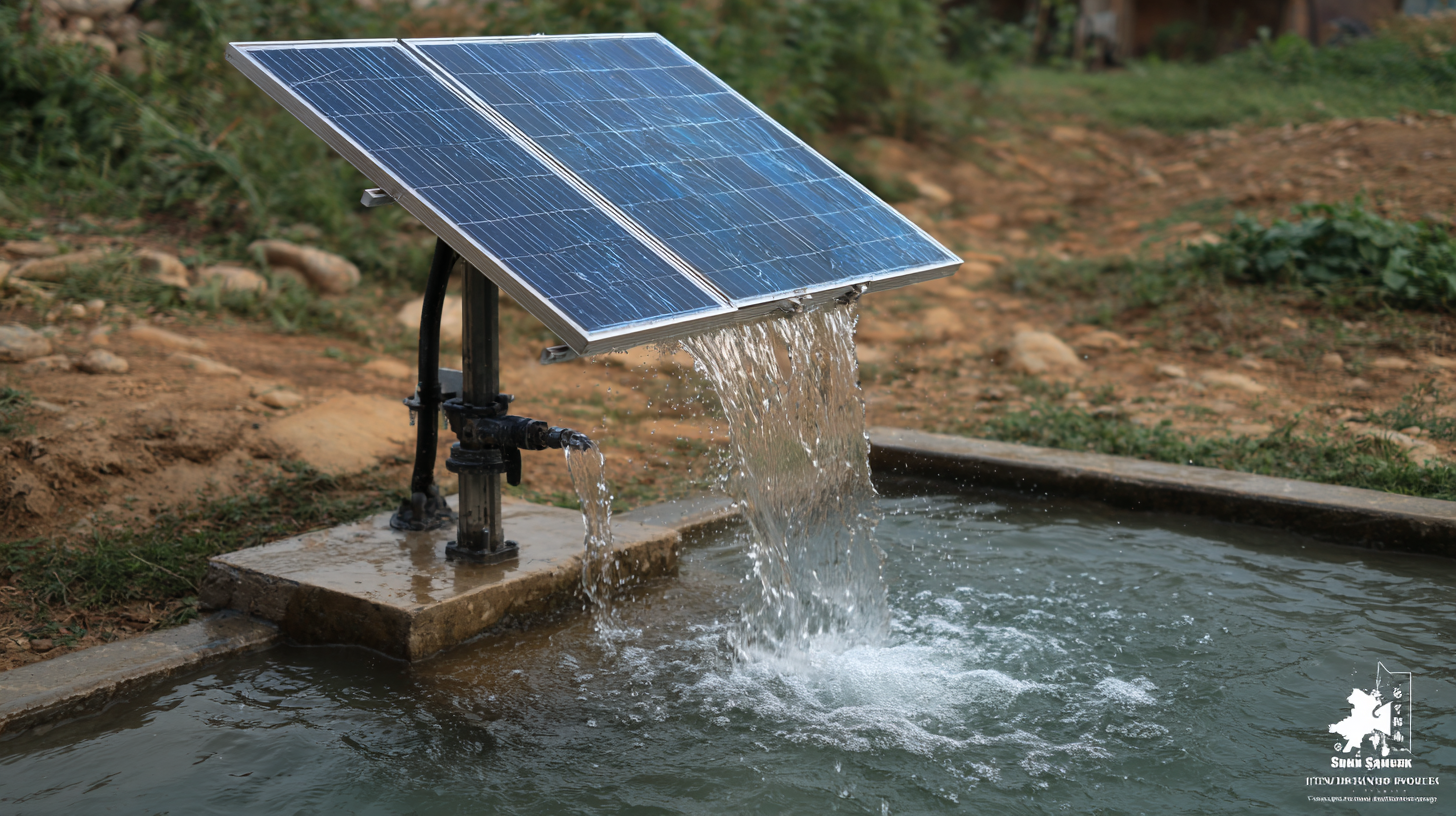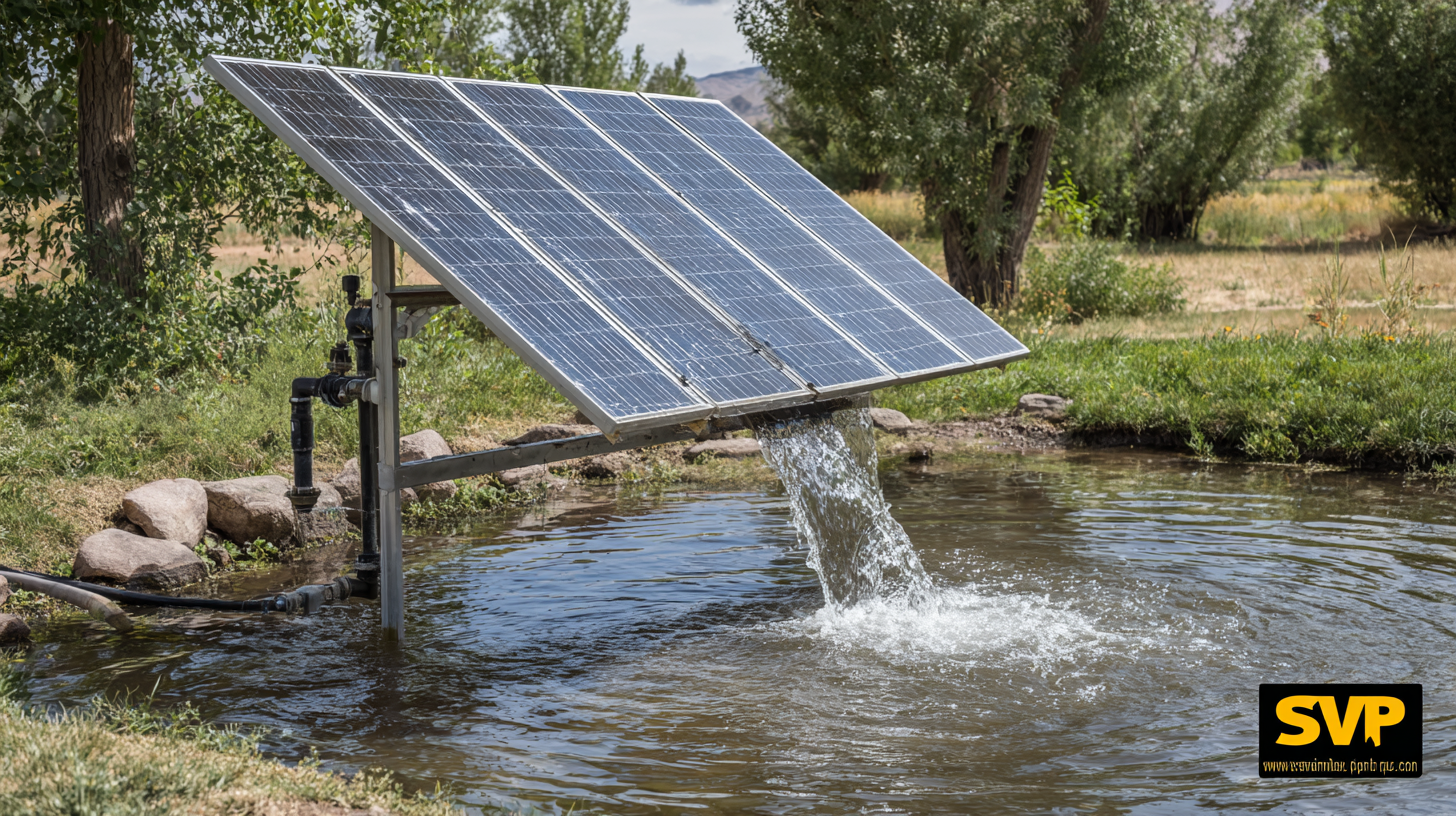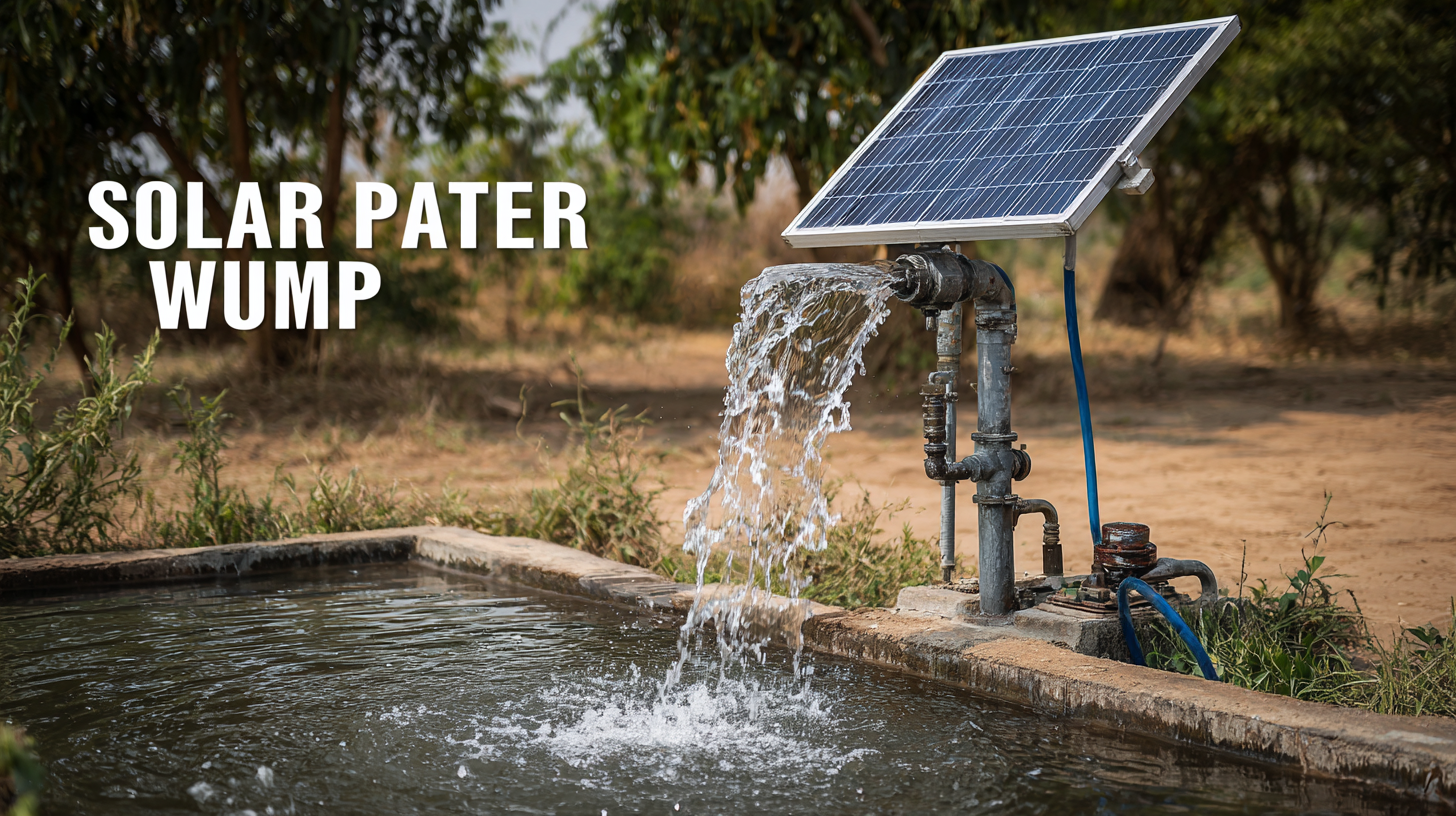Exploring Versatile Applications of Best Solar Panel Water Pumps and Effective Usage Tips
As the global demand for sustainable and efficient water solutions continues to grow, Solar Panel Water Pumps have emerged as a versatile and eco-friendly alternative for both residential and agricultural applications. According to a report by Grand View Research, the solar water pump market is projected to reach USD 2.40 billion by 2025, driven by the rising need for renewable energy sources and irrigation technologies in developing regions. These pumps harness solar energy, providing a cost-effective and environmentally friendly way to irrigate crops, supply drinking water, and even circulate water in aquaculture. This blog aims to explore the dynamic uses of solar panel water pumps, offering effective tips and insights to maximize their efficiency and longevity, while positioning them as a key player in the transition towards sustainable water management.

The Rise of Solar Panel Water Pumps: A Statistical Overview of Market Growth
The solar panel water pump market is experiencing significant growth, driven by the increasing adoption of renewable energy solutions. As the demand for sustainable agricultural practices and efficient water management intensifies, solar water pumps are emerging as a vital resource. With an anticipated market size surpassing USD 4.5 billion by 2032 and a remarkable CAGR of 9.7%, this sector is expected to play a crucial role in addressing water scarcity and enhancing agricultural productivity worldwide.
In India, the rapid expansion of solar energy presents both opportunities and challenges. The intersection of solar energy utilization and water resource management is pivotal as cropland encroachment and water scarcity continue to pose risks to sustainable agriculture. The effective implementation of solar water pumps not only showcases the potential of solar photovoltaics in transforming agricultural practices but also highlights the urgent need for strategic resource management in this growing sector. Embracing such technologies is essential for ensuring agricultural resilience and fostering eco-friendly farming practices.
Market Growth of Solar Panel Water Pumps (2018 - 2023)
This bar chart illustrates the market growth of solar panel water pumps from 2018 to 2023, highlighting the increasing demand for sustainable water solutions driven by advancements in solar technology and environmental consciousness.
Key Benefits of Solar Water Pumps: Cost Savings, Sustainability, and Efficiency
 Solar water pumps are becoming increasingly popular due to their numerous advantages, offering
cost savings, sustainability, and efficiency. One of the primary benefits is the
reduction in electricity costs. By harnessing solar energy, users can drastically lower their monthly utility bills while
maintaining a reliable water supply for irrigation, livestock, or home usage. This green technology not only benefits the wallet
but also aids in conserving natural resources, making it
a win-win situation for both individuals and the planet.
Solar water pumps are becoming increasingly popular due to their numerous advantages, offering
cost savings, sustainability, and efficiency. One of the primary benefits is the
reduction in electricity costs. By harnessing solar energy, users can drastically lower their monthly utility bills while
maintaining a reliable water supply for irrigation, livestock, or home usage. This green technology not only benefits the wallet
but also aids in conserving natural resources, making it
a win-win situation for both individuals and the planet.
To maximize the effectiveness of solar water pumps, consider these tips for optimal usage. First,
position your solar panels in areas with maximum sunlight exposure to ensure they operate at peak efficiency. Clear any
obstacles that may cast shadows on the panels to enhance energy absorption. Additionally, regular maintenance of the pump system is crucial;
clean the filters and inspect the solar panels frequently to prevent performance drops. Finally, assess your water needs
accurately to select a pump with the appropriate capacity, ensuring that your solar system meets your demands without
being over or underpowered.
How to Choose the Right Solar Water Pump for Your Specific Needs
When selecting the right solar water pump for your needs, it’s essential to consider several factors that impact its performance and suitability. First and foremost, determine the pump's purpose—be it for irrigation, fountain features, or livestock watering. Understanding the specific application will aid in narrowing down your options. For instance, if you require a pump for a garden fountain, look for designs that provide adequate flow rates and head heights suited for aesthetic displays.
Another critical aspect to consider is the pump's solar panel size and efficiency. Larger panels typically generate more power, enhancing the pump's performance, especially in cloudy conditions. Evaluate the total height of water lifting required and the distance from the water source to the destination. This will help you identify the necessary flow rate and head pressure suitable for your system. Lastly, pay attention to build quality and warranty offerings, as a durable pump will provide long-term service, ensuring you maximize your investment while enjoying the benefits of solar energy.
Exploring Versatile Applications of Best Solar Panel Water Pumps and Effective Usage Tips - How to Choose the Right Solar Water Pump for Your Specific Needs
| Application | Pump Type | Power Output (W) | Flow Rate (L/h) | Water Depth (m) | Max Lift (m) |
|---|---|---|---|---|---|
| Irrigation | Submersible | 100 | 500 | 20 | 30 |
| Fountain | Surface | 50 | 300 | 5 | 10 |
| Aquaculture | Submersible | 150 | 600 | 15 | 25 |
| Drinking Water | Surface | 80 | 400 | 10 | 15 |
| Water Features | Submersible | 120 | 500 | 12 | 20 |
Effective Installation Tips for Maximizing Solar Water Pump Performance
Installing solar water pumps effectively requires careful consideration to maximize their performance. One key tip is to ensure that the solar panels are properly positioned to capture optimal sunlight throughout the day. This often means installing the panels at an angle that faces directly south in the northern hemisphere or north in the southern hemisphere. Additionally, avoiding shading from trees or structures will enhance efficiency, allowing the pump to operate at its full potential.
Another important aspect of installation is securing all the electrical connections and ensuring that the pump is placed in a location where it can easily draw water. Using high-quality cables to minimize power loss and regularly checking the connections for wear and tear will help maintain performance over time. Lastly, consider using a battery storage system if the pump operates during non-sunlight hours, providing a reliable water source regardless of weather conditions. These simple tips can lead to significantly improved efficiency and longevity of your solar water pumping system.
Maintenance Best Practices for Longevity and Optimal Functionality of Solar Water Pumps
Maintaining solar water pumps is crucial to ensure their longevity and optimal performance. Regular inspection of the solar panels is essential; dirt and debris can significantly diminish their efficiency. Cleaning the panels at least once every few months can help maintain their power output. Additionally, you should check the connections and wiring for any signs of wear or corrosion, as these can lead to operational issues over time.
Another critical aspect of care is monitoring the water source and pump components. It's advisable to inspect the pump itself for any blockages that may impede water flow. Regularly remove any accumulated sediments or debris in the intake area. Moreover, lubricating moving parts, as specified by the manufacturer, will help to prevent wear and tear. By adopting these best practices, users can ensure that their solar water pumps remain functional and effective for many years, providing sustainable water solutions while minimizing maintenance challenges.

Contact Details
Address:
Solar Pump Solutions,
Borrisokane, Co. Tipperary, Ireland.
